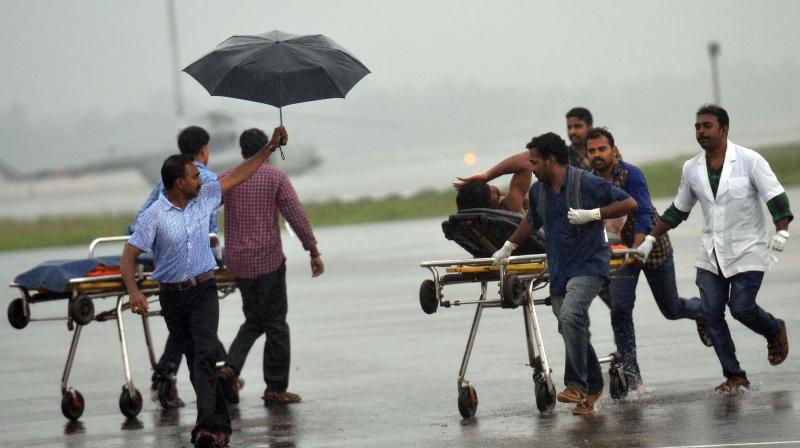Cyclone Ockhi: Missing fine print costs Kerala
IMD says it indeed gave warning but State Emergency Operations Centre missed it.

THIRUVANANTHAPURAM: It is usual for winds to acquire speeds above 45 km per hour during monsoons. Perhaps why the IMD bulletin on November 29, hours before Ockhi struck, warning of squally weather with wind speed reaching 45-55 km per hour to 65 km per hour along the South Kerala coast was brushed aside by the State Emergency Operations Centre (SEOC). The unusual could have been found, if the SEOC was serious about its job, a bit down the bulletin. It was written: "Fishermen are advised not to go fishing." "Such a warning is not given every day," said Mr Sudevan, the IMD director. Normally, when wind speed over sea area is expected to exceed 45 km per hour up to 75 nautical miles from the coast, fishermen are only told be cautious, and not warned against going out into the sea. Take for instance the IMD bulletin a day before on November 28, which had also predicted squally winds reaching a speed of 45-55 km per hour. This bulletin but was just cautionary.
"Our bulletins are communicated to the SEOC, the director of fisheries, all deputy directors of fisheries and director of ports through fax or SMS or email. They are duty-bound to read it closely. The details are in the fine print," Mr Sudevan said. The claim of the SEOC that they had to get an alert from the IMD to issue a cyclone warning was disputed by IMD senior scientist K Sathi Devi who said that adequate warnings were issued on November 29 itself. If the SEOC had taken the November 29 bulletin seriously, the Marine Enforcement authorities could have taken out public announcements through the coastal areas asking fishermen not to go out fishing on the evening of November 29. (Over 90 percent of the fishermen who went missing had gone fishing late on November 29.)
Indian National Centre for Ocean Information Services, Hyderabad, had also warned the Fisheries Department of deep depression informed on November 29. This was confirmed by fisheries minister J Mercikutty Amma. However, Marine Enforcement authorities said that they received the information only by 12 noon on November 30, hours after Ockhi struck. "The coastal hazards monitoring and detection at national level is primarily done by the INCOIS and Indian Meteorological Department (IMD) along with multiple research organizations. There are multiple observation networks currently in operation throughout the Indian Ocean, Arabian Sea and Bay of Bengal region to monitor and receive real time data, which enables to send accurate and précise warnings to all coastal states and districts through a variety of communication devices like fax, phone, email, sms and video conference," a former IMD scientist said.
"The crucial thing is the disaster management body in the state, mainly the SEOC, should be equipped to properly interpret this profusion of information," the scientist added. Here is how the IMD director, Mr Sudevan, put it: "The IMD cannot predict cyclone before it strikes but it can provide enough indications that a particular formation over the oceans could develop into something dangerous like a cyclone." Dr Thara K G, former head of the disaster management faculty in Institute of Land and Resource Management, said that the SEOC had failed to interpret the information properly. "The very mention of 'deep depression' is enough to infer that it could turn out to be a cyclonic storm," she said.

